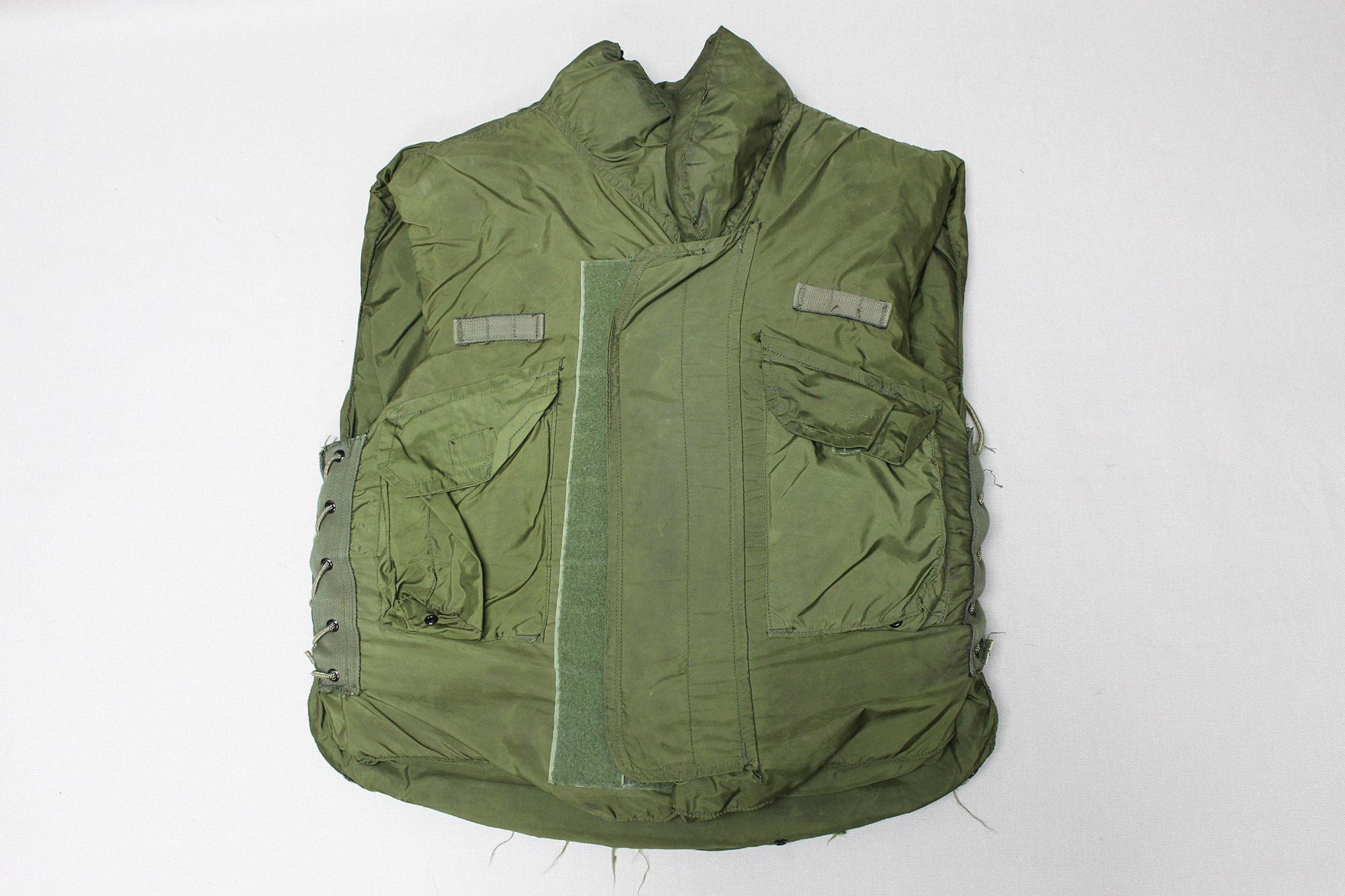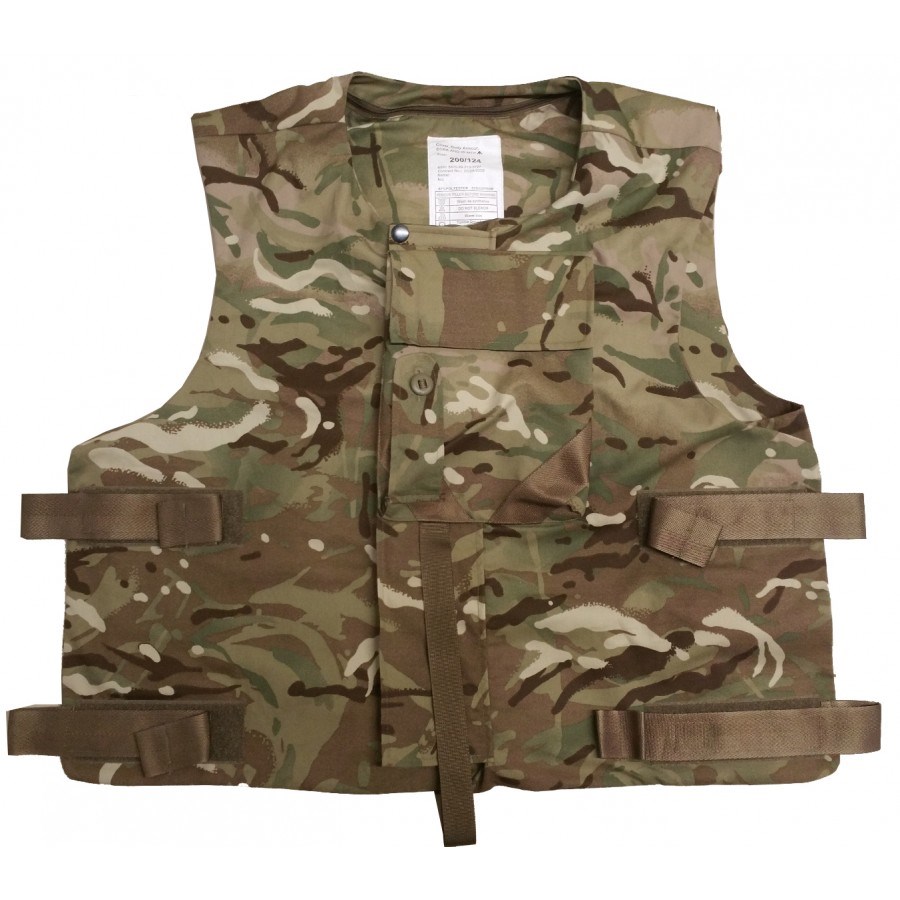Military Flak Vest - There are several problems with this article. Please help improve it or discuss these issues on the talk page. (Learn how and from whom to remove these template messages)
The body of this article may be too short to properly summarize the main points. Please consider expanding the guide to provide an accessible summary of all the important aspects of the article. (May 2015)
Military Flak Vest

This article requires additional citations for verification. Please help improve this article by adding references to reliable sources. Inappropriate content may be challenged and removed. Find sources: "Human Armor System for Grounding Forces" - News · Newspapers · Books · Scholars · JSTOR (February 2013) (Learn how to remove and who this template message is from)
New Body Armor Carrier, Plates And Female Focused Designs Headed To Soldiers
The Army's Personal Armor System (PASGT, pronounced /ˈpæz ɡət/ PAZ -gət) is a combat helmet and ballistic vest used by the United States Army from the early 1980s to the mid-2000s. The helmets and vests were followed by the Loud Helmet (LWH), the Modular Integrated Communications Helmet (MICH) and the Interceptor Body Armor (IBA) respectively.
Designed in the mid-1970s as a replacement for the M1 helmet and earlier fragmentation vest, prototypes of the PASGT were tested in the late 1970s before being installed in the early 1980s. In the early 2000s, the PASGT vest was first replaced by the IBA and the PASGT helmet was soon replaced by the LWH and MICH. As of 2018, the only remaining US military users of the PASGT in any capacity are the US Army Reserve and the US Navy, the latter of which maintains PASGT helmets for use by sailors aboard their warships. Like the "US Navy Flock Jacket".
PASGT is an acronym, which stands for Personnel Armored System for Ground Forces. Used alone, PASGT refers to both the vest and the helmet together.
In the US military, the PASGT helmet was commonly referred to as "Kevlar". This designation has since been adopted for use with other helmets. The PASGT helmet is also known by its wearers in the US military as a "K-pot", similar to the nickname given to the "iron pot" of the M1, which has been in use since the 1940s. A scale was used. by the US military. In the 1970s, including the Vietnam War. The PASGT helmet was also, but more commonly, known to wearers as a "Fritz" helmet similar to the Stahlhelm, a standard helmet used by German armies in World Wars I and II.
Jared Kushner Mocked For Wearing Flak Jacket And Blazer On Iraq Trip
The PASGT vest, on the other hand, was known collectively by its wearers in the US military as a "herd jacket" or "herd vest", a continuation of the nickname for earlier nylon and fiberglass-based protective vests.
The PASGT helmet is a combat helmet first used by the US Army in 1983 and eventually adopted by other military and law enforcement agencies around the world. The shell is constructed from 19 layers of Kevlar, a ballistic aramid fabric treated with the Folic resin process, and is rated at Threat Level IIIA. Helmets provide protection from shrapnel and ballistic threats. It meets the 1800 requirements of MIL-STD-662 E. It weighs from 3.1 lb (1,410 g) (extra small) to 4.2 lb (1,910 g) (extra large).
PASGT helmets are usually painted olive drab, although other colors such as tan, gray and black may be used. Camouflage was available in the form of cloth helmets with different camouflage patterns, such as trees, six-color desert, and three-color desert. Some PASGT helmets are redesigned with new camouflage colors such as Universal Camouflage Pattern and Multicam.

Besides military use, the PASGT helmet is used by SWAT teams, where it is often painted black. It is also used by UN peacekeepers, where it is often painted UN blue.
Military Flak Vest Body Armour Plate Carrier Genuine French
Worn with a helmet cover, the PASGT helmet is usually attached with a belt around the back of the helmet and two clips for charging glue (sometimes known as "cat's eyes"). These straps are also used to hold plants or small personal items, as in the earlier M1 helmet. Names and blood types can be printed on these bands to identify the wearer and their blood type in case someone is injured. In the US Army, PASGT helmets often feature a patch with the wearer's insignia sewn on the front, and/or another patch with the wearer's unit insignia. US Marines wore the eagle, globe, and anchor insignia as a metal-transmission on the front of the helmet, similar to that worn by Marines on the BDU breast pocket. This practice continued with the adoption of the LWH, but it fell into disuse and was abandoned because the mounting base of the night vision equipment hid the insignia, and the hole in the fabric distorted the insignia.
It completely replaced the M1 steel helmet in US military service in the 1980s. It first saw combat use during Operation Urgent Fury in Grada in 1983, became standard issue for the US Army in 1985, and completely replaced the M1 helmet for frontline soldiers by the end of the decade. Military units stationed in Alaska were the last to receive the helmets, some not receiving the PASGT until 1988.
Additional accessories were developed for the PASGT helmet, including a helmet mounting assembly for attaching night vision goggles and an anti-riot helmet.
The PASGT helmet was replaced in US military service by the lighter helmet of the US Marine Corps and the US Army's Modular Integrated Communications Helmet, which was replaced by the Advanced Combat Helmet.
British Dpm Camo Flak Vest
The PASGT system is still used by some US allies and continues to see limited use by the US military as of 2017, serving as one of the options available to sailors on duty aboard US Navy ships.
This section requires additional references for verification. Please help improve this article by adding references to reliable sources. Inappropriate content may be challenged and removed. (September 2013) (Learn how and from whom to remove this template message)
A US Navy sailor wearing a PASGT vest in 2016. Although discontinued throughout the US military, the US Navy has been using the PASGT jacket on its warships since late June 2016.

In April 2017, a US Navy sailor wearing the PASGT-derived "US Navy Flock Jacket". Although derived from PASGT and similar in appearance, the "US Navy Flock Jacket" is actually a different model of vest.
Soldiers In Flak Vest. Military Helmet. Powerful Soldiers In Pro Stock Vector Image By ©popaukropa #96664038
The PASGT vest was the standard body armor of the US Army from the mid-1980s to the early 2000s, when it was replaced by the Interceptor Body Armor System's tactical outer vest. The PASGT vest replaced the M-69 Fragmtation Protective Body Armor nylon vest used by the Army, and the M-1955 Fragmtation Protective Body Nylon Army and Duron plate vest used by the Marine Corps.
The PASGT vest was the first piece of US Army body armor to use Kevlar, as opposed to the ballistic nylon used in earlier models of body armor. While generally unable to stop machine gun bullets, the PASGT vest provided better protection from shrapnel and reduced the severity of minor wounds than the M-69. Besides being able to stop pistol rounds, including the 9×19mm Parabellum FMJ,
The vest was designed or intended only to cover small particles without harming the user. The PASGT vest weighs approximately 9 lb (4,080 g), a slight increase over the previous model. Based on tests done for the Brass Feature Ballistic Testing Company, former ARDEC general investigator John Erwin said the PASGT vest is equivalent to NIJ Level II or IIA protection: 124 multiple grains in its main panels. front and back), but is susceptible to multiple close-range rounds or shots to the neck and shoulders.
Another indepdt test, featured in GunNews magazine, claims that the PASGT vests .357 Magnum Federal 125 grain JHP, .357 Magnum S&W 158 grain JSP, 9mm Federal 115 grain FMJ + 5mm +PMJ + PM + 19 Corrange from 10 yards. of , although the first was beaten by a close second from the 9mm Federal FMJ.
Ukrainian Tactical Unloading Bulletproof Vest Military Vest
The PASGT vest is usually covered with a wooden nylon fabric, either ERDL or U.S. pattern. In the forest. A very small number of vests were made from olive drab, but only wooden versions were issued to US troops.
Similar to the PASGT helmet, camouflage covers were available in various patterns to be worn over the vest. Early camouflage covers were in DBDU but later came in DCU pattern.
In January 2000, the US Navy began using a derivative of the PASGT vest known as the "US Navy Flock Jacket Mk 1, Mod 0".

The USN flak jacket is sage gray or brown.
Japan Sends Bulletproof Vests From Defense Forces To Ukraine
Military drone range, laser range finder military, military range bags, military range targets, long range military radio, military radio range, military range finder, military long range binoculars, range rover military discount, military range rover, range of military drones, military range bag
0 Comments